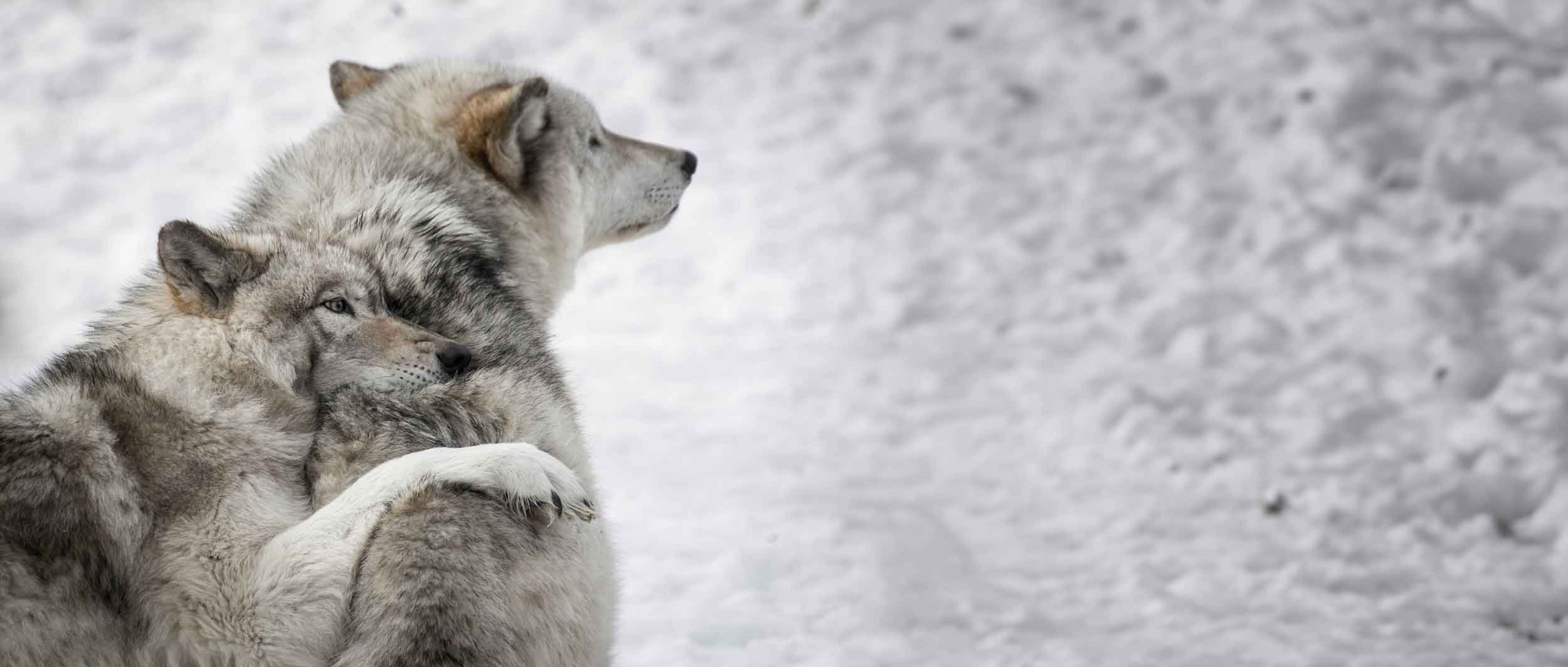
Colorado Wolf Information Project
We provide science-based information to the public concerning the gray wolf, its biology and behavior, and the challenges wolves and humans face when sharing a landscape.
Colorado was once home to hundreds of wolves.
But settlers, with government assistance, systematically eliminated the gray wolf from the Colorado landscape through hunting, trapping, and poisoning. By the mid-1940s, not a single wolf was left in Colorado.
In December 2023, Colorado Parks and Wildlife released 10 gray wolves into Northern Colorado. Two of those wolves were illegally shot. A second reintroduction of 15 wolves occurred in January 2025, and Colorado is now home to at least 30 wild gray wolves. Read the Wolf Management Plan.
If left alone, it is expected that the Colorado gray wolf population will thrive and expand over the coming years. As the wolf population grows, the wolves will form established packs with defined territories, which promote stability in wolf populations and help reduce conflict with livestock, as packs are better able than individuals to hunt the gray wolf’s preferred prey—elk.
Education
CWIP engages in public education about the gray wolf through the publication of research reports, webinars, media outreach, and public presentations. Get started by learning some Gray Wolf basics.

About Us
The Colorado Wolf Information Project (CWIP) is an unincorporated organization based in Colorado. CWIP is directed by Raymond J. Toney, a retired attorney. CWIP collaborates with wolf biologists and other scientists in conducting and disseminating original research. CWIP engages state and federal wolf policy-makers concerning wolf-livestock conflict and its reduction. CWIP also provides evidence-based information and educational materials to the public concerning the gray wolf.
Federal and State Wolf Policy
Wolves are managed in the US in accordance with federal and state laws and policies. The gray wolf is currently listed as an endangered species at the federal level, with some exceptions. Where gray wolves are not on the endangered species list, as in Idaho, Montana, and Wyoming, state laws and management policies control. Where they are on the endangered species list, as in Colorado, there are strict limitations on the harassment and killing of wolves.
-
At present, our efforts are focused on (1) keeping the gray wolf on the endangered species list in Colorado and across the US, (2) promoting nonlethal conflict mitigation tools, (3) requiring federal and state wildlife agencies to gather detailed information about wolf-livestock conflict and the use of nonlethal conflict mitigation tools, (4) increasing and improving scientific research efforts into wolf-livestock conflict at the federal and state levels, and (5) eliminating the cruel and inhumane treatment of wolves, such as trapping and aerial gunning, by state and federal wildlife managers.
-
We currently are researching and drafting petitions for rulemaking to require both state and federal wildlife agencies to gather comprehensive and detailed information about wolf-livestock conflict and ongoing efforts to mitigate conflict by livestock producers. Once filed, the public may support the petitions through letters and phone calls to relevant officials, as well as through in-person testimony before the Colorado Parks and Wildlife Commission.


